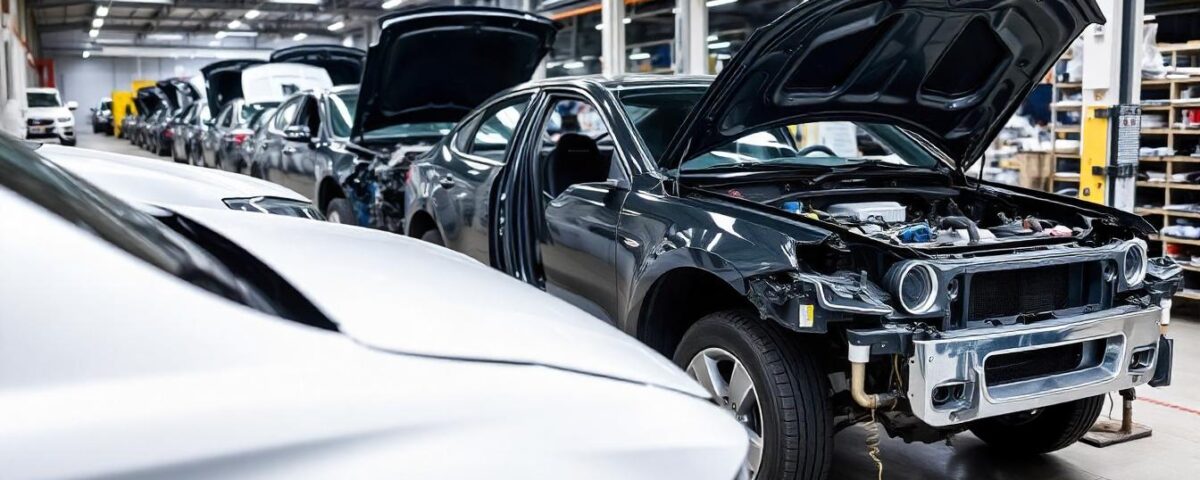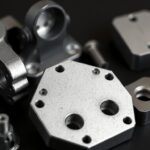
Why Zinc Die Casting Is Ideal for High-Volume Production of CNC Components
23 August 2024
CNC Tool Selection Decoded: 15 Essential Principles Revealed
28 August 2024In today's automotive industry, fuel efficiency is more than just a selling point—it's a critical factor in addressing environmental concerns, reducing emissions, and lowering operational costs for consumers. As governments worldwide tighten regulations on carbon emissions and fuel consumption, manufacturers are under increasing pressure to produce vehicles that are not only high-performing but also more fuel-efficient. This drive for efficiency has led to a significant focus on reducing the overall weight of vehicles, as even small reductions in weight can lead to substantial improvements in fuel economy.
Lightweight car parts have become a key strategy in enhancing fuel efficiency. By using materials like aluminum, titanium, and carbon fiber, and employing advanced manufacturing techniques, automotive engineers can design components that are both strong and light. This is where CNC (Computer Numerical Control) machining comes into play. CNC machining allows for the precise production of complex parts with minimal material waste, making it an ideal technology for creating lightweight components that meet the rigorous demands of modern automotive engineering. The ability to produce these parts with exact specifications ensures that manufacturers can achieve the perfect balance between weight reduction and structural integrity, ultimately leading to vehicles that are not only more fuel-efficient but also safer and more reliable.

Understanding the Role of Weight in Fuel Efficiency
Vehicle weight plays a critical role in determining fuel consumption. The heavier a vehicle, the more energy it requires to move, which directly translates to higher fuel usage. Reducing the weight of a car by even a small percentage can lead to significant improvements in fuel efficiency, as the engine doesn’t have to work as hard to propel the vehicle. This is especially true during acceleration and when driving in stop-and-go traffic, where frequent starts and stops consume more fuel.
However, reducing vehicle weight isn’t as simple as replacing heavy materials with lighter ones. Engineers must carefully balance weight reduction with the need to maintain structural integrity and safety. Lightweight materials like aluminum, titanium, and carbon fiber offer the advantage of being strong yet light, but they must be utilized in a way that ensures the vehicle can still withstand the forces it encounters during regular use, as well as in the event of a collision. This balance is crucial because while weight reduction can improve fuel efficiency, it should never come at the expense of safety.
Several case studies illustrate the effectiveness of lightweight car components in enhancing fuel efficiency. For example, many manufacturers have successfully integrated lightweight aluminum engine blocks, which not only reduce overall vehicle weight but also help in dissipating heat more efficiently, further improving performance. Similarly, the use of carbon fiber in body panels and chassis components has led to notable reductions in fuel consumption, all while maintaining or even enhancing the vehicle's structural strength and safety. These examples demonstrate how strategic weight reduction through advanced materials and CNC machining can lead to significant gains in fuel efficiency without compromising on vehicle safety or performance.
CNC Machining: A Game Changer in Automotive Manufacturing
Explanation of CNC Machining Technology
CNC (Computer Numerical Control) machining is a manufacturing process that uses computer-controlled tools to shape and create precise components from a variety of materials. Unlike traditional manual machining, CNC machining automates the process, allowing for higher precision, consistency, and efficiency. This technology can produce complex geometries that would be difficult, if not impossible, to achieve with conventional methods. By programming the CNC machines with detailed instructions, manufacturers can ensure that each part is made to exact specifications, minimizing errors and material waste.
Precision and Versatility of CNC Machining in Producing Complex Car Parts
One of the standout features of CNC machining is its unparalleled precision. The ability to work within tight tolerances means that even the most intricate car parts can be produced with exact dimensions, ensuring that they fit perfectly within the vehicle's overall design. This precision is crucial in automotive manufacturing, where components must work seamlessly together to ensure the vehicle's performance and safety. Moreover, CNC machining is versatile enough to handle a wide range of materials, from metals like aluminum and titanium to composites like carbon fiber, making it an essential tool for producing the diverse array of parts needed in modern vehicles.
How CNC Machining Enables the Production of Lightweight Components
CNC machining plays a pivotal role in the production of lightweight automotive components. By precisely shaping materials known for their strength-to-weight ratio, such as aluminum and carbon fiber, CNC machining enables the creation of parts that are both strong and light. The technology's ability to remove material with extreme precision means that manufacturers can reduce weight without compromising the integrity or functionality of the part. This capability is crucial for producing components that contribute to fuel efficiency by reducing the overall weight of the vehicle, all while maintaining the durability and performance that consumers expect.
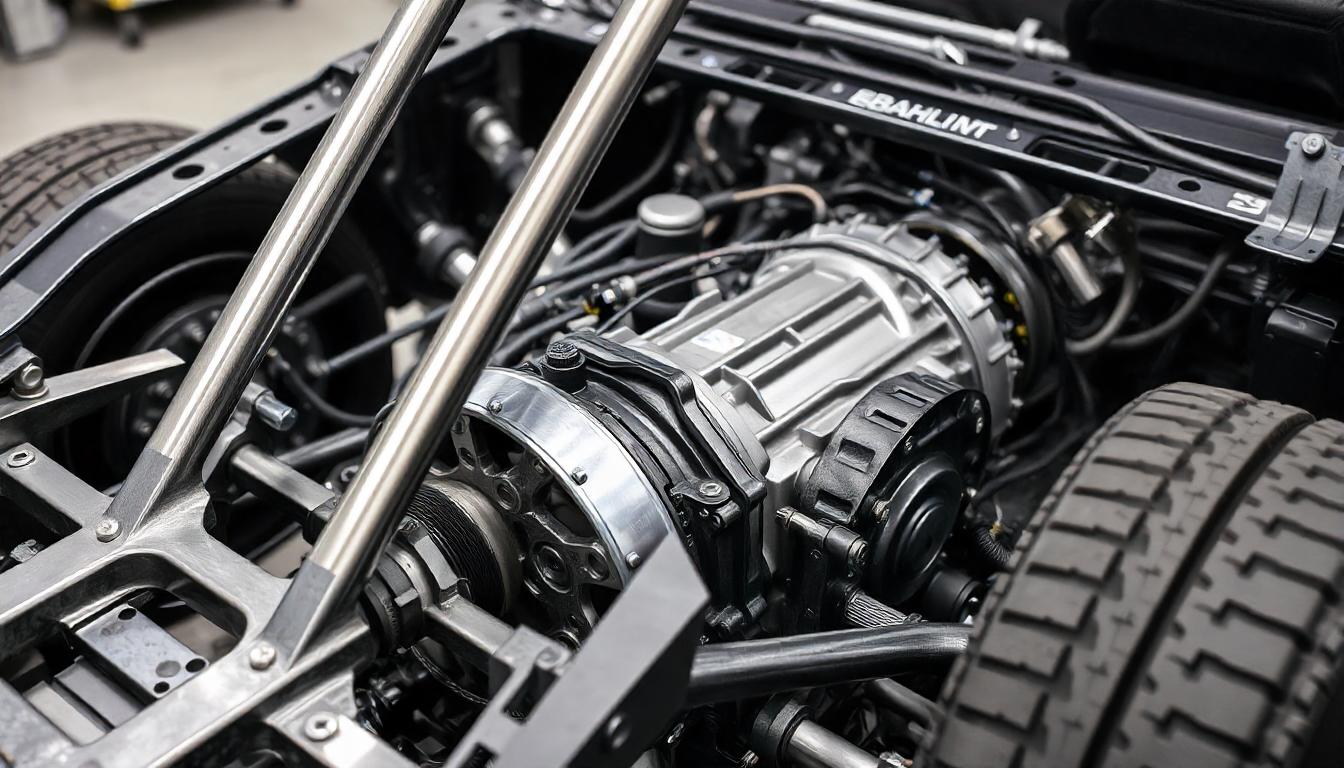
Materials Commonly Used in Lightweight CNC Car Parts
In the quest to improve fuel efficiency and overall vehicle performance, automotive manufacturers have increasingly turned to lightweight materials such as aluminum, titanium, and carbon fiber. These materials are prized for their exceptional strength-to-weight ratios, making them ideal for reducing vehicle weight without sacrificing durability or safety.
Aluminum is perhaps the most widely used lightweight material in the automotive industry. It is approximately one-third the weight of steel while still offering excellent structural strength. Aluminum is also highly resistant to corrosion, making it ideal for components that are exposed to the elements. Its ability to be easily machined and formed into complex shapes further enhances its appeal for use in everything from engine blocks and transmission cases to body panels and suspension components.
Titanium is another material that has gained popularity in automotive manufacturing, particularly for high-performance and luxury vehicles. Titanium is significantly stronger than aluminum and steel, yet it is also much lighter. This unique combination of properties makes titanium an excellent choice for critical components like exhaust systems, connecting rods, and valve springs, where strength and weight are both paramount. However, due to its high cost and the challenges associated with machining it, titanium is typically reserved for specialized applications where its benefits justify the expense.
Carbon fiber represents the pinnacle of lightweight materials, offering unmatched strength and rigidity at a fraction of the weight of metal alloys. Made from thin strands of carbon woven together and embedded in a resin matrix, carbon fiber is incredibly strong in tension and compression. It is commonly used in high-end sports cars and racing vehicles for components like body panels, chassis parts, and even entire monocoque structures. Despite its high cost, the use of carbon fiber in these applications can result in significant weight savings, leading to dramatic improvements in acceleration, handling, and fuel efficiency.
Advantages of These Materials in Automotive Applications
The primary advantage of using materials like aluminum, titanium, and carbon fiber in automotive applications is their ability to reduce weight without compromising performance. Weight reduction directly contributes to improved fuel efficiency, as lighter vehicles require less energy to move. This leads to lower fuel consumption and reduced emissions, which are critical factors in meeting stringent environmental regulations and consumer demands for greener vehicles.
In addition to fuel efficiency, these materials also enhance vehicle performance in other ways. For example, aluminum's excellent thermal conductivity helps with heat dissipation in components like radiators and engine blocks, improving the overall efficiency of the vehicle's powertrain. Titanium's high strength-to-weight ratio allows for the production of smaller, lighter components that can withstand extreme forces, contributing to improved acceleration and handling. Carbon fiber, with its exceptional stiffness and low weight, enhances the structural integrity of the vehicle while also lowering its center of gravity, resulting in better stability and cornering ability.
Another key advantage of these materials is their resistance to corrosion and fatigue. Aluminum and titanium are both highly resistant to rust and other forms of corrosion, making them ideal for use in parts that are exposed to harsh environmental conditions. Carbon fiber, being a composite material, is also highly resistant to environmental degradation, ensuring that the components made from it maintain their strength and appearance over time.
CNC Machining Techniques Tailored to These Lightweight Materials
CNC machining plays a crucial role in realizing the potential of these advanced materials in automotive manufacturing. Each material presents its own set of challenges and requires specific machining techniques to achieve the desired results.
Aluminum is relatively easy to machine due to its softness and low melting point. CNC machining of aluminum often involves high-speed cutting with specialized tools that can handle the material's tendency to adhere to cutting surfaces. The use of coolants and lubricants is common to prevent overheating and ensure a clean finish. CNC machining allows for the precise shaping of aluminum into complex forms, enabling the creation of intricate components that are both lightweight and strong.
Titanium, on the other hand, is much more challenging to machine due to its hardness and low thermal conductivity. It requires specialized tools made from materials like carbide or polycrystalline diamond (PCD) to withstand the wear and heat generated during the machining process. Slow cutting speeds and the use of ample coolant are essential to prevent tool wear and achieve accurate cuts. CNC machines designed to handle titanium must be robust and capable of maintaining high levels of precision, even under the demanding conditions required to machine this tough material.
Carbon fiber presents its own unique challenges in CNC machining. As a composite material, it is abrasive and can quickly wear down conventional cutting tools. Additionally, carbon fiber's layered structure means that it can delaminate if not machined correctly. CNC machining of carbon fiber typically involves the use of diamond-coated tools and high spindle speeds to achieve clean cuts without damaging the material's integrity. CNC machines must be finely tuned to ensure that the cutting forces do not cause the material to split or fray, preserving the strength and aesthetics of the finished part. In summary, the combination of advanced materials like aluminum, titanium, and carbon fiber with precise CNC machining techniques allows automotive manufacturers to produce lightweight components that enhance fuel efficiency and performance. These materials, when expertly machined, contribute to the development of vehicles that are not only more economical to operate but also safer, faster, and more environmentally friendly.
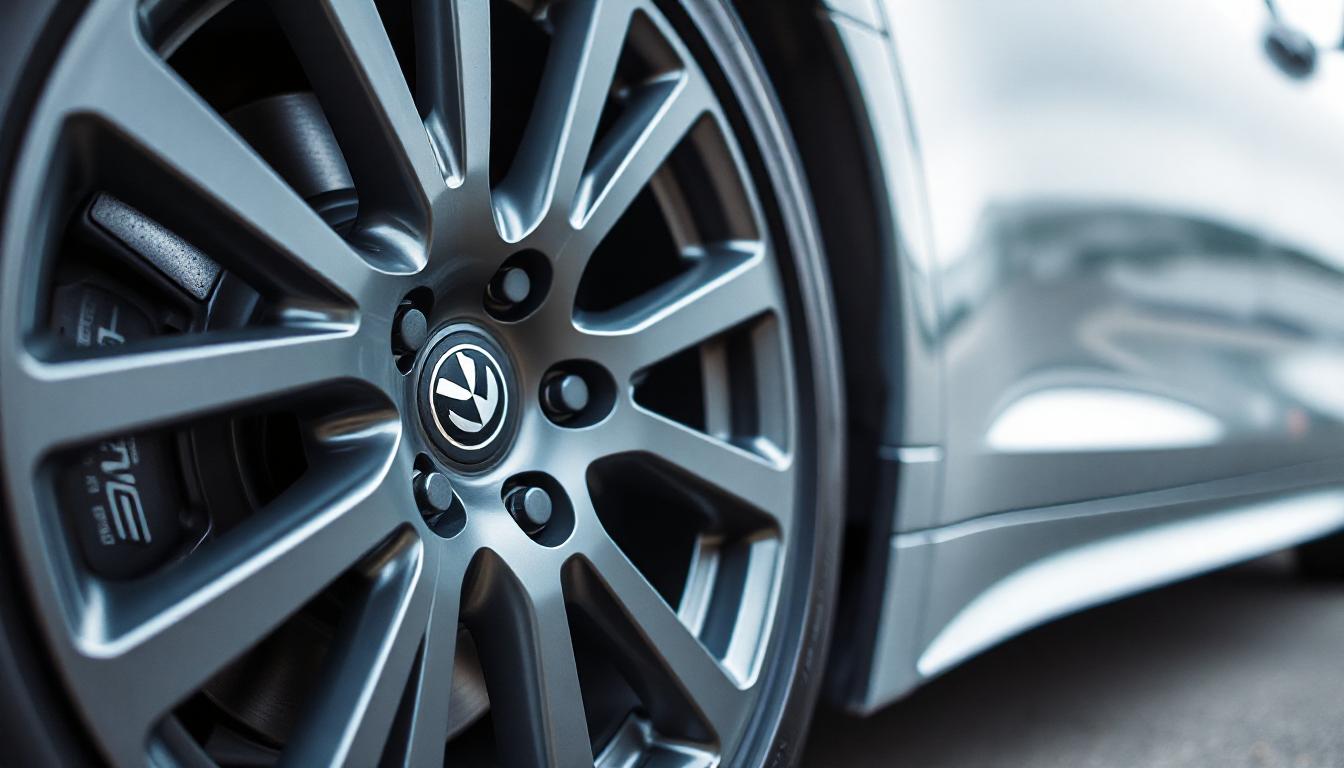
The Benefits of Lightweight CNC Car Parts
Enhanced Fuel Efficiency and Reduced Emissions
Lightweight CNC car parts are instrumental in boosting fuel efficiency. By reducing the overall weight of a vehicle, the engine requires less power to move it, leading to lower fuel consumption. This not only helps in meeting increasingly stringent fuel economy standards but also reduces greenhouse gas emissions, making vehicles more environmentally friendly. Lighter vehicles contribute to a smaller carbon footprint, aligning with global efforts to combat climate change and pollution.
Improved Vehicle Performance and Handling
In addition to fuel efficiency, lightweight CNC components significantly enhance a vehicle's performance and handling. A lighter vehicle accelerates more quickly, improves braking efficiency, and is easier to maneuver. This reduction in weight also lowers the vehicle's center of gravity, which enhances stability and cornering ability. Whether it’s in everyday driving or high-performance scenarios, the use of lightweight parts ensures that vehicles respond more dynamically and predictably to driver inputs, leading to a more engaging and safer driving experience.
Long-Term Cost Savings for Manufacturers and Consumers
Although the initial investment in CNC machining and lightweight materials may be higher, the long-term cost savings are substantial. For manufacturers, the reduced material waste and precision of CNC machining lower production costs. For consumers, vehicles with lightweight components typically have lower operating costs due to improved fuel efficiency and less wear and tear on mechanical systems. Over time, these savings contribute to a lower total cost of ownership, making lightweight CNC car parts a financially wise choice for both producers and buyers.
Challenges in Producing Lightweight CNC Car Parts
Technical Challenges in Machining Lightweight Materials
Producing lightweight CNC car parts involves working with materials like aluminum, titanium, and carbon fiber, each of which presents its own set of technical challenges. Aluminum, while relatively easy to machine, can be prone to issues like tool wear and heat buildup due to its softness and low melting point. Titanium, on the other hand, is much harder and requires specialized tools and slower machining speeds, making the process more time-consuming and costly. Carbon fiber, being a composite material, is abrasive and can quickly degrade cutting tools, while also posing risks of delamination if not handled correctly. These technical challenges necessitate highly specialized CNC machinery and expertise to achieve the desired precision and quality.
Balancing Cost, Durability, and Performance
One of the key challenges in producing lightweight CNC car parts is finding the right balance between cost, durability, and performance. Lightweight materials tend to be more expensive, and the complexity of machining them can drive up production costs. However, these costs must be weighed against the benefits of improved fuel efficiency and vehicle performance. Additionally, the parts must be durable enough to withstand the stresses of daily use without compromising safety. Achieving this balance requires careful material selection, advanced machining techniques, and ongoing quality control throughout the production process.
Overcoming Production Scale Challenges with CNC Technology
Scaling up production of lightweight CNC car parts to meet the demands of the automotive industry presents another significant challenge. CNC machining, while precise, is often slower than other manufacturing methods, particularly when working with difficult-to-machine materials. To overcome this, manufacturers must invest in high-speed, multi-axis CNC machines capable of handling complex geometries and materials efficiently. Automation and continuous process improvements are also essential to maintain production volumes while ensuring consistent quality. These efforts enable manufacturers to meet large-scale production requirements without sacrificing the advantages of lightweight, high-performance components.
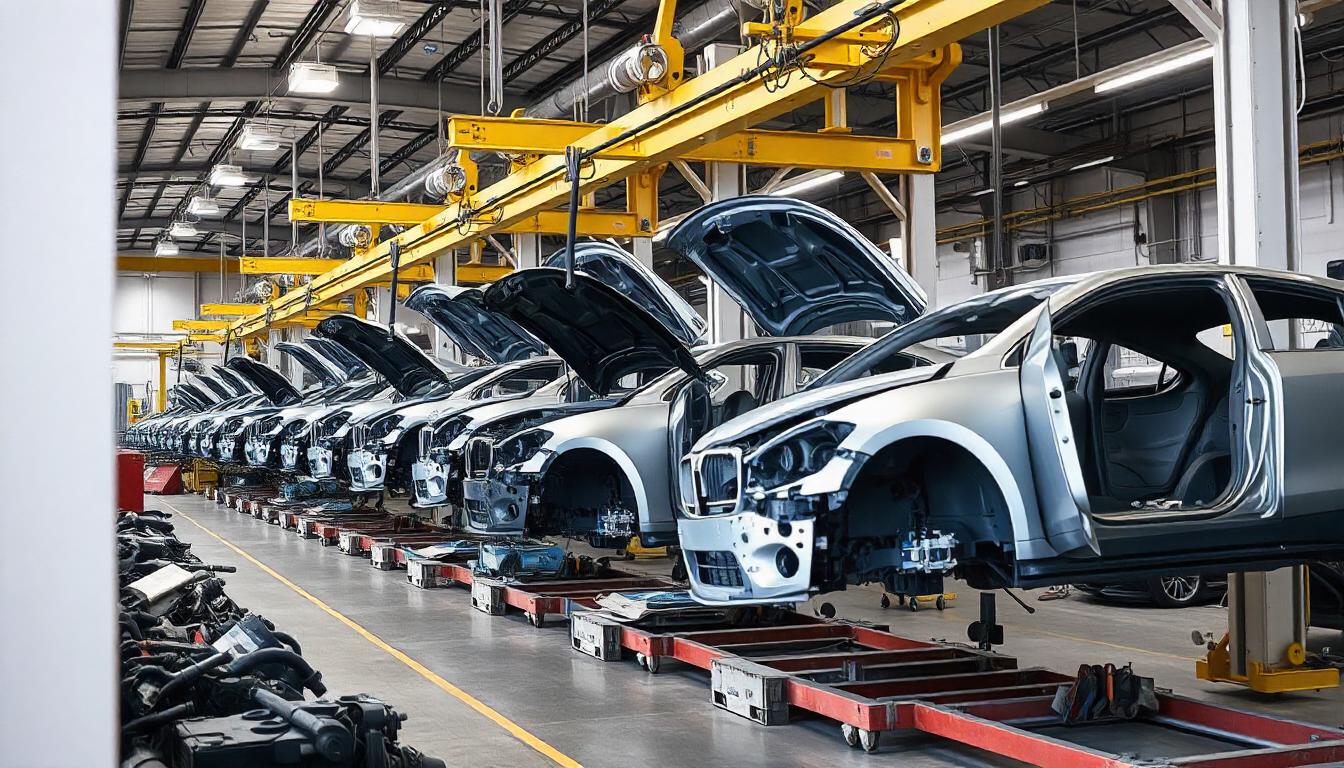
The Environmental Impact of CNC Machining in Lightweighting
Eco-Friendly Aspects of CNC Machining: Reduced Material Waste
CNC machining is inherently eco-friendly due to its ability to minimize material waste. Traditional manufacturing methods, such as casting or forging, often involve excess material that must be trimmed or discarded, leading to significant waste. In contrast, CNC machining works by precisely removing material from a solid block, which means that only the necessary material is used, and the remainder can often be recycled. This efficiency not only conserves resources but also reduces the environmental burden associated with material extraction and processing, making CNC machining a more sustainable choice for producing lightweight car parts.
Comparing Environmental Impact with Traditional Manufacturing Methods
When compared to traditional manufacturing methods, CNC machining has a lower environmental impact. Conventional processes can involve multiple steps, each of which consumes energy and generates waste. CNC machining streamlines production by combining these steps into a single, highly controlled process, reducing energy consumption and emissions. Additionally, CNC machines can be programmed to optimize material usage and machining time, further lowering the environmental footprint of production. While the initial energy consumption of CNC machines can be high, the overall efficiency and reduced waste make it a greener alternative to traditional methods.
Role of Lightweight Car Parts in Reducing Vehicle Carbon Footprint
Lightweight CNC car parts play a crucial role in reducing the carbon footprint of vehicles. By decreasing the overall weight of a vehicle, these parts contribute to better fuel efficiency, which in turn reduces the amount of fuel burned and the emissions produced. This is particularly important in the context of global efforts to combat climate change, as transportation is a major source of greenhouse gas emissions. The use of lightweight components, produced efficiently through CNC machining, helps to create vehicles that are not only more fuel-efficient but also significantly less polluting, aligning with the automotive industry's goals of sustainability and environmental responsibility.
The Role of Simulation and Prototyping in CNC Machining
Optimizing Designs with CAD and Simulation Tools
In the production of lightweight car parts, computer-aided design (CAD) and simulation tools are essential for optimizing designs before they reach the machining stage. These tools allow engineers to create detailed 3D models of components and simulate various conditions to predict how they will perform under stress, heat, and other factors. By running simulations, designers can identify potential weak points, adjust material distribution, and refine the design to achieve the desired balance between weight reduction and structural integrity. This process ensures that the final design is both lightweight and durable, meeting the stringent requirements of automotive applications.
Importance of Prototyping for Performance and Safety Validation
Prototyping plays a critical role in validating the performance and safety of lightweight components. Even with advanced simulation tools, real-world testing is necessary to confirm that the part will perform as expected in actual conditions. Prototypes allow engineers to assess how the part behaves under physical stress, fatigue, and environmental exposure. This testing phase is crucial for ensuring that the lightweight components not only meet performance criteria but also adhere to safety standards. Prototyping helps identify any issues early in the development process, reducing the risk of costly failures once the parts are in production or, worse, in use by consumers.
CNC Machining’s Support for Rapid Prototyping and Iterative Design
CNC machining is a key enabler of rapid prototyping and iterative design processes. With CNC technology, engineers can quickly produce prototypes directly from CAD models, allowing them to test and refine designs with minimal delay. This rapid turnaround is essential for the iterative design process, where multiple versions of a component may be created, tested, and modified before the final design is achieved. CNC machining’s precision and versatility mean that even complex, lightweight parts can be produced quickly and accurately, facilitating faster development cycles and reducing time to market for innovative automotive components.
Innovations in CNC Machining for Lightweight Automotive Parts
Recent Advancements: 5-Axis Machining and Additive Manufacturing
Recent advancements in CNC machining technology have significantly enhanced the production of lightweight automotive parts. One notable development is 5-axis machining, which allows for greater flexibility and precision in shaping complex geometries. Unlike traditional 3-axis machines that move along the X, Y, and Z axes, 5-axis machines add two additional rotational axes, enabling the production of intricate and multi-dimensional parts in a single setup. This capability is particularly beneficial for creating lightweight components with complex designs, such as those required in modern automotive applications.
Another significant advancement is the integration of additive manufacturing, or 3D printing, with CNC machining. Additive manufacturing complements CNC machining by allowing for the rapid creation of prototypes and the production of complex geometries that would be challenging to achieve with traditional subtractive methods alone. This hybrid approach enables manufacturers to experiment with new lightweight materials and designs, pushing the boundaries of what is possible in part production.
Pushing the Boundaries of Lightweight Part Production
These technological innovations are expanding the possibilities for producing lightweight car parts. The increased precision and complexity achievable with 5-axis machining allow for the creation of highly optimized parts that are both strong and light. Meanwhile, additive manufacturing's ability to build parts layer by layer provides opportunities for incorporating advanced materials and custom designs that can further reduce weight and enhance performance.
Potential Future Developments
Looking ahead, several potential developments could further enhance fuel efficiency through lightweighting. Advances in materials science, such as the development of new composite materials and nanomaterials, may offer even greater strength-to-weight ratios. Additionally, improvements in AI and machine learning could lead to more sophisticated design optimization algorithms, enabling the creation of highly efficient lightweight components. As CNC technology continues to evolve, these innovations are expected to drive further advancements in automotive manufacturing, contributing to more fuel-efficient and environmentally friendly vehicles.
Conclusion
In conclusion, CNC machining stands at the forefront of innovations in automotive manufacturing, particularly in the production of lightweight car parts that enhance fuel efficiency and vehicle performance. The precise and efficient nature of CNC technology, coupled with advanced materials like aluminum, titanium, and carbon fiber, enables the creation of components that reduce vehicle weight without compromising safety or durability. Recent advancements such as 5-axis machining and additive manufacturing are pushing the boundaries of what's possible, offering even greater potential for optimizing lightweight designs. As the automotive industry continues to prioritize sustainability and performance, CNC machining will play a pivotal role in developing the next generation of fuel-efficient vehicles, underscoring its importance in shaping the future of automotive technology.

